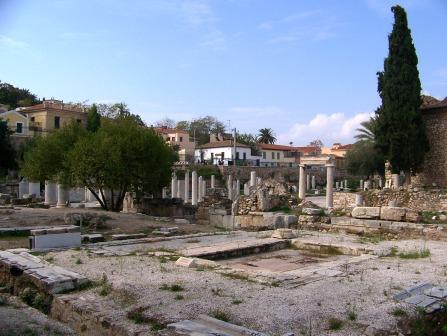
The Agora contains an eclectic collection of buildings of all sorts from all of the different eras of Athenian history.
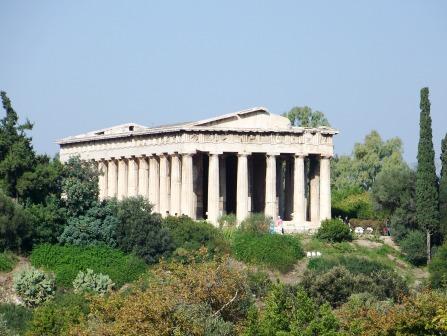
Athens
3. The Agora and the Temple of Olympian Zeus
Immediately to the north of the Acropolis is a large flat area that served as the everyday center for ancient Athens and is called the Agora. If the religious life of ancient Athens happened atop the Acropolis, the business dealings, the law courts, and the government services all took place here in the Agora.

The Agora contains an eclectic collection of buildings of all sorts from all of the different eras of Athenian history.

Dating also to the fifth century B.C. is the Hephaisteion (above), a temple dedicated to the ancient Greek god Hephaistos, the god of crafts, artisanship, and metalworking. It is a near duplicate on a smaller scale than the Parthenon, built only a few decades earlier, and perhaps intended as a prototype for it.
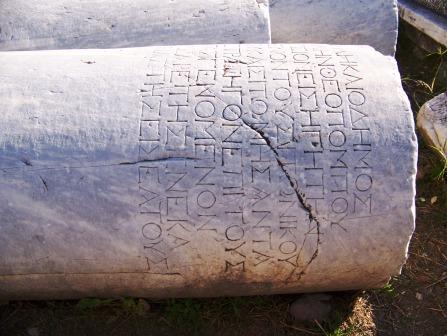
Lots of pieces of ancient sculpture lie scattered around the Agora.
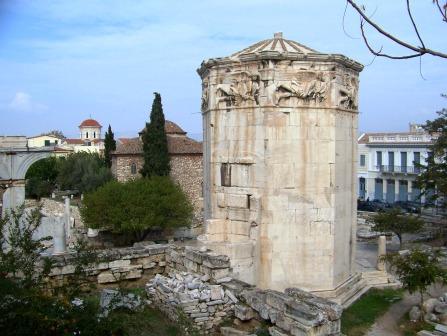
This structure (above), called the Tower of the Winds, dates from the Hellenistic period of the second century B.C. (The Hellenistic period is the period following the conquest of Athens and the rest of Greece by Alexander the Great, who died in 323 B.C., after which the center of Greek power moved north to Macedonia.) This structure was intended as a weather vane for measuring winds and a water clock, using water dripping at a constant speed to measure time.
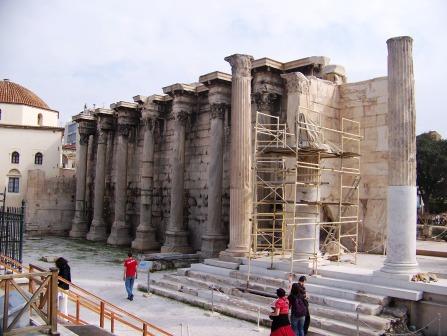
This wall (above) is all that remains of the Library of Hadrian, built in the Roman period of the second century A.D. (The Roman period began when Rome conquered Athens in 146 B.C.) The Roman Emperor Hadrian was a great admirer of ancient Athenian culture and sponsored the construction of several new monumental buildings in the city.
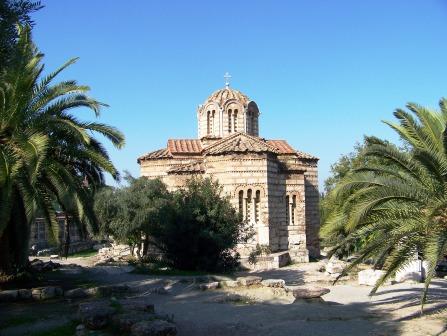
The Church of the Holy Apostles (above and below) dates from the Byzantine period of the tenth century A.D. (The Byzantine period began when Constantine moved the capital of the Roman Empire from Rome to Constantinople in the fourth century A.D. Even after Rome and the western part of the Roman Empire collapsed in the fifth century, the eastern Roman Empire or Byzantine Empire survived for another thousand years and ruled Greece until 1453 A.D. Constantine was also the first Christian emperor, and the Byzantine Empire was what is now Greek Orthodox Christian.) The interior of this church is filled with painted frescoes representing Jesus (in the central dome) and angels and saints (in the outer half-domes).
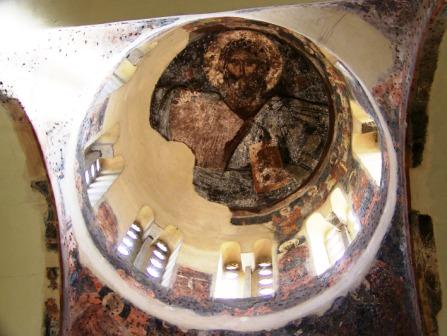
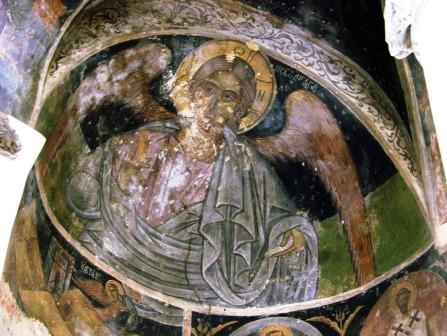
Also in the Agora is the former mosque (below) from the Ottoman period of the fifteenth century A.D. (The Ottoman period began in 1453 A.D., when the Ottoman Turks conquered the Byzantine Empire, including Greece, and ruled it until modern Greece won its independence in 1821.) Sadly, it is closed and badly in need of repairs. It seems, the modern Greeks are in no rush to repair any of the reminders of the Turkish period.
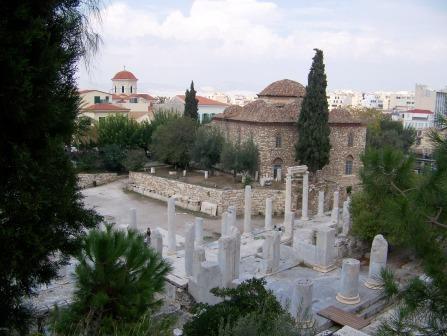
The most recently built building on the Agora is a reconstruction of the ancient Stoa of Attalos, built in the 1950s with money from the Rockefellers. It is a long narrow building with many small rooms, where there would have been shops, opening out to the long porch, where men would have loitered to conduct business or exchange gossip. (In ancient Athens women were expected to remain at home, so only men would have wandered around any of these public spaces.)
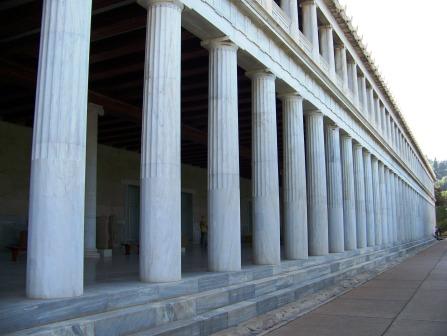
Not far from the Agora is the Kerameikos, the ancient cemetery of Athens. A handful of ancient funerary monuments survive, including this sculpture of a dog (below).
Some of the ancient walls that surrounded Athens can be seen nearby (below).
The other great ancient monument in Athens (but nowhere near the Agora) is the Temple of Olympian Zeus. It was begun even before the Parthenon, in the sixth century B.C., but was completed only seven hundred years later with the help of the Roman Emperor Hadrian. It was dedicated to Olympian Zeus, the greatest of the ancient Greek gods and the ruler of all the gods.
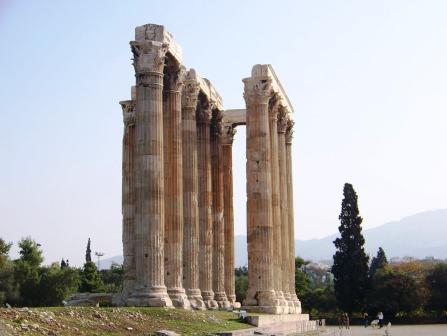
Even though only a part of it still remains, the Temple of Olympian Zeus is overwhelmingly impressive. Only 15 of the original 104 columns are still standing, but each is about 17 meters or 56 feet high. The temple would have been 96 by 40 meters or 315 by 130 feet--the largest temple in ancient Greece.
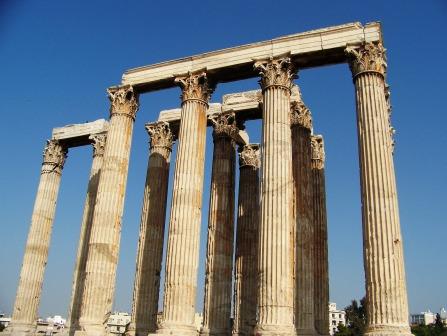
In the Middle Ages a Christian hermit lived for several years atop what survived of the temple, relying on others to donate food that he could hoist up to feed himself, a feat of sacrifice to prove the depth of his faith.

Most of the time we just spent looking upwards!
From the Temple of Olympian Zeus there is a beautiful view to the Acropolis.
Likewise, from the Acropolis there is a beautiful view to the Temple of Olympian Zeus.
Click here to continue with the museums of Athens.